Bee vs Fly: Meet the Flies That Look Like Bees
Updated: Sep. 06, 2022
Bees and their look-alikes, including robber flies and hoverflies, are good bugs for your garden. Learn about flies that look like a bee.
Bee vs Fly: How to Tell the Difference
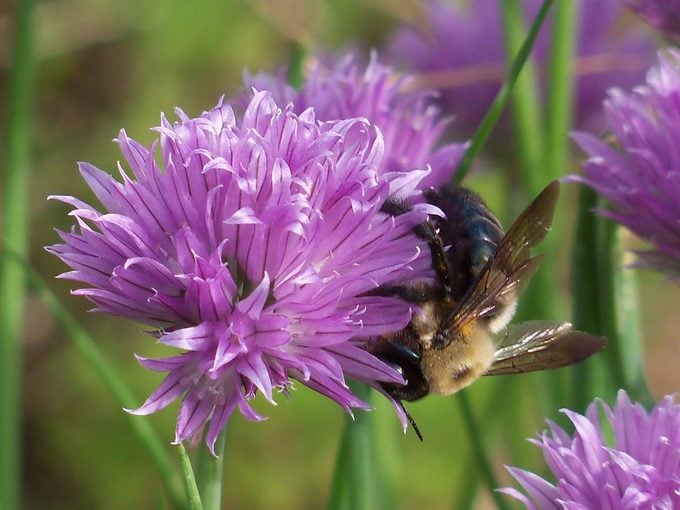
Did you see a bee or a fly in your garden? Look for these characteristics when trying to identify bees vs flies. Don’t be afraid to get close. Foraging bees are too intent on what they’re doing to bother with you, and flies have no stingers at all. Check out these physical features to help identify a fly that looks like a bee.
Learn 7 sweet facts about honeybees.
Wings
Bees have two pairs of wings, whereas flies have only one set. But since the forewings and hind wings of bees are usually connected, they may appear to have only one pair.
Eyes
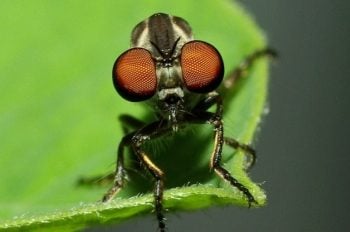
Both bees and flies have compound eyes that excel at detecting motion, which is why it’s so hard to swat them. But flies, unlike bees, have enormous eyes that meet at the top of the head in the male, and nearly so in the female.
Antennae
Bees have relatively long antennae. Most flies have very short antennae, with a long bristle called an arista at the tip.
Mouthparts
Bees have chewing mouthparts and a tonguelike proboscis. Flies have a spongy pad at the end of a flexible “arm,” or a spearlike beak.
Behavior
Few bees hover, at least for extended periods. Many flies seem to be able to hover indefinitely.
Discover natural ways to keep bees and wasps away from hummingbird feeders.
How to Identify a Fly That Looks Like a Bee
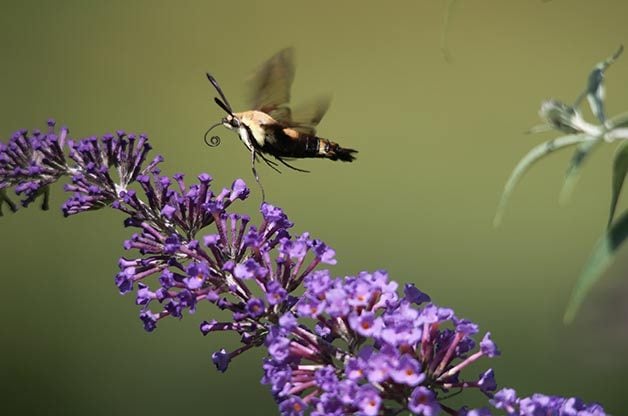
Just because it buzzes doesn’t mean it’s a bee. You may be surprised to learn just how many other garden bugs masquerade as bees, including moths, beetles and the real masters of disguise, flies. We have a tendency to think of flies as garbage-infesting, picnic-harassing, bloodsucking pests. But actually, most flies are big allies in the yard and garden. Take a look at these bee look-alikes, and find out why they really are good bugs for your garden.
It pays to mimic bees. After all, they can sting to defend themselves, and potential predators know this. Birds quickly learn to associate bold patterns of black and yellow, white or red with trouble. Of course, no fly can actually sting, but flies gain protection by looking like they can.
Check out the top flowers that attract bees.
Hoverflies
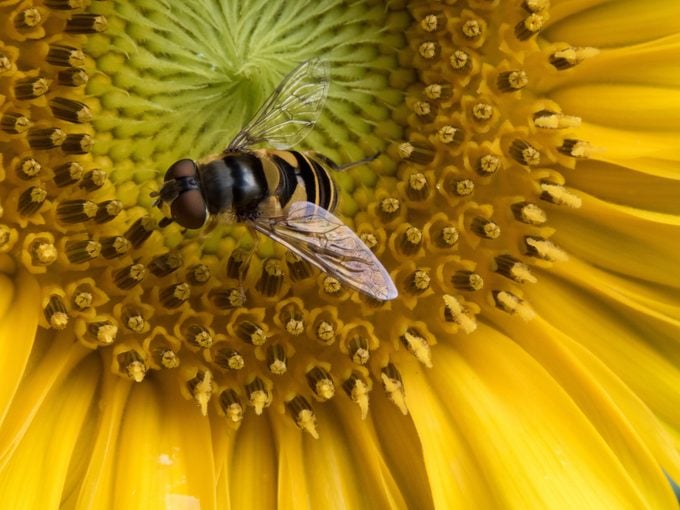
The most common bee mimics are the hoverflies, members of the Syrphidae family, which resemble small bees or wasps like yellow jackets. Some even sound like wasps, with the frequency of their wing beats matching that of their stinging counterparts. They are garden friendly, helping to pollinate flowers and eat aphids.
Learn easy ways to help the bees.
Robber Flies
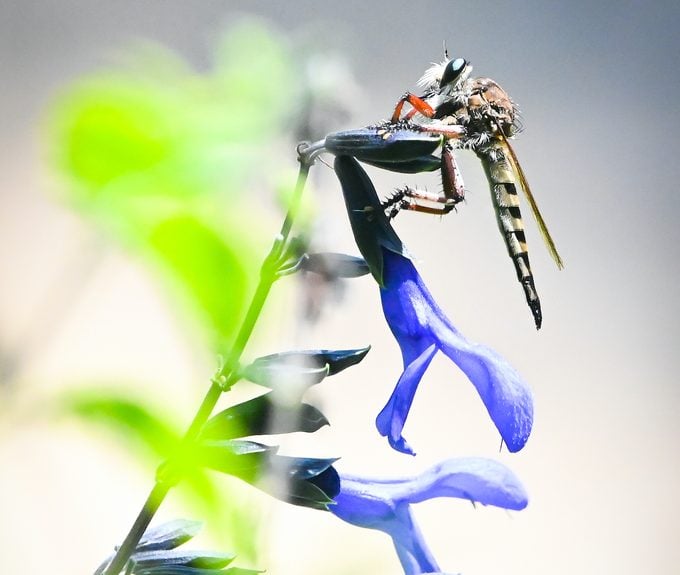
The Asilidae family’s robber flies are excellent mimics of bumblebees. Instead of visiting flowers, they perch on foliage, twigs or the ground, and then scan the sky overhead. When another insect flies over, the robber fly zooms off to grab the victim and then returns to its perch. This fly family, too, helps control some of the less desirable garden insects.
Bee Flies
Bee flies, also called “wanna-bees,” are in the Bombyliidae family. Their hairy bodies are delicate and can go bald quickly during their brief lives as adults. Many bee flies have a long proboscis that looks much like a mosquito’s bloodsucking snout. No worries, though—bee flies are harmless and feed on flower nectar.
Check out beneficial garden bees you want in your yard.
Feather-Legged Flies
Feather-legged flies in the Tachinidae family really take their disguise to the next level with fake pollen baskets on their hind legs. As adults, they may pollinate flowers; as larvae, they are parasitic on stink bugs and squash bugs. These flies are certainly good bugs for your garden!
Next, learn how to attract and host mason bees in a bee house.